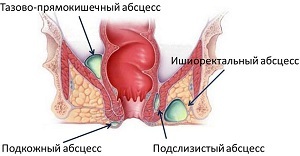 Acute paraproctitis is a serious disease that requires competent medical tactics.
Acute paraproctitis is a serious disease that requires competent medical tactics.
Otherwise, the disease can go into a chronic form. This disease is a purulent inflammation, which is formed in adipose tissue in the rectal area. Paraproctitis is the inflammation of the peritopulmonary tissue.
Note that the disease most often occurs in adults, and in children it can be recognized much less often. Symptoms and causes of the disease vary depending on the form of the disease.
Paraproctitis, after hemorrhoids, can be considered the most common proctological disorder. It occurs precisely in the rectal area.
Contents
- Acute purulent paraproctitis is the most dangerous form of
- What causes the disease
- A sharp onset, acute current. ..
- Therapy of the disease
- Time on the surgical table. ..
- Postoperative period and rehabilitation
- Possible complications
- Preventive measures
- Diet and nutrition basics
Acute purulent paraproctitis- the most dangerous form of
This type of disease is characterized by an unexpected appearance and is expressed by various clinical symptoms. 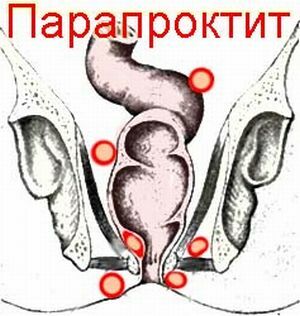
These manifestations depend on the localization of the main focus of the problem, on the size, as well as on the characteristics of the primary pathogen.
Note that the body's resistance also has an impact on the development of the disease. Purulent paraproctitis can occur, both in acute and chronic form.
In particular, the acute form of the disease is the formation of abscesses of the corresponding fatty tissue, but the chronic purulent form develops in the form of pararectal fistulas, which are formed after acute paraproctitis.
Acute appearance of purulent paraproctitis is a purulent inflammation of the tissues surrounding the rectum.
What causes the disease
The causes of acute paraproctitis can be very different. In the formation of this disease, a huge role is played by infections. 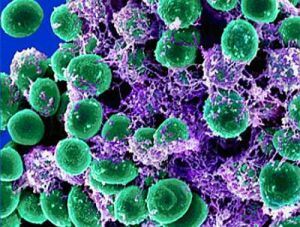
Diseases appear due to such pathogens:
- of staphylococci;
- streptococci;
- Proteus, etc.
Recall that infectious microbes can enter the cell spaces exclusively from the rectum.
A sharp onset, a sharp current. ..
The disease begins acutely. The patient has malaise, weakness, headache, sometimes nausea, as well as periodic pain in the bowel. But not rarely pain radiates into the stomach.
Symptoms of the disease can also become high fever. At the outset, the disease can be accompanied by a poor state of health, blunt aching pain, both in the pelvic area, and in the rectum, skin flushing, etc.
Note that the localization of the inflammatory process and the degree of severity of the underlying symptoms.
Therapy of the disease
Patients who suffer from primary paraproctitis can relieve their condition at home. The patient should give preference to the reception of warm baths, the use of special compresses with ichthyol. For a compress often used also Ointment Vishnevsky.
But, if the disease is acute, then it can be treated only with the help of surgical intervention. After the diagnosis is established, it is necessary to start treatment immediately.
During the operation the doctor applies intravenous anesthesia or sacral anesthesia. Local anesthesia in this case will be inappropriate.
Surgery for acute paraproctitis can be performed according to the following scheme:
- opening and draining of the abscess, removal of the infected crypt, dissection of purulent formation in the luminal cavity;
- excision of crypts and sphincterotomy;
- holding ligature;
- movement of the gut flap.
Time on the surgical table. ..
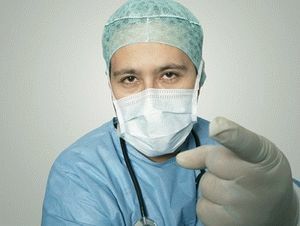 Paraproctitis is a disease whose treatment should not be debugged in a remote box. The patient must completely anesthetize and only then proceed to surgical treatment. Basically, doctors use mask anesthesia or sacral anesthesia.
Paraproctitis is a disease whose treatment should not be debugged in a remote box. The patient must completely anesthetize and only then proceed to surgical treatment. Basically, doctors use mask anesthesia or sacral anesthesia.
During the treatment of acute paraproctitis, it is inappropriate to use local anesthesia, as this disease is very dangerous and spreads quickly. With the help of a radical operation, an abscess is required to open, which will help to quickly eliminate it.
Operational intervention should be in special coloproctological units, as a result of which purulent motion is completely eliminated.
If the treatment occurs in a non-specialized hospital, then only the opening and drainage of the abscess is performed. This approach can cause a recurrence of the disease, resulting in a fistula.
The main goal of surgical intervention is to completely eliminate the purulent move, once and for all to save the patient from an unpleasant disease. Treatment should be started immediately after diagnosis, so that the disease does not turn into a chronic condition.
After opening the abscess, after three or four days, it is necessary to make a special latex ligation. This procedure puts pressure on the tissues and provides a full and successful treatment and recovery.
Thanks to this method it is possible to achieve an effective result and, at the same time, not to lose the function of the muscle compressing the anus.
How the operation is performed in acute paraproctitis - carefully, naturalistic video:
Postoperative period and rehabilitation
After the operation, it is necessary to take careful care of your health. Both the patient and the doctor should closely monitor the condition during the rehabilitation period. The fact is that after the operation the disease can not completely disappear.
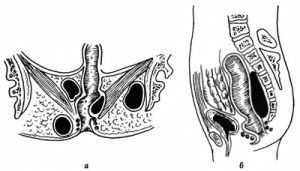
In the photo the location of ulcers in acute paraproctitis
In order that it does not arise relapses it is necessary to behave correctly in the postoperative period. In some cases it is necessary to resort several times to an operation intervention.
Even after a successful operation, the patient most often feels unwell and constantly needs special attention. Therefore, it is necessary to adjust to a long and patient recovery after surgery.
First of all, you need to monitor the hygiene of the anal area. In addition, after the operation, it is necessary to continue paraproctitis treatment with the help of medications and dietary preparations.
Possible complications of
If the patient is diagnosed with acute paraproctitis, such complications can arise:
- spontaneous opening of the abscess;
- inflammation of the pelvic fat;
- common infectious process, etc.
In general, complications of the disease are associated with the development of scar tissue, which leads to deformation of the anal canal. In addition, in severe cases, the sphincter of the rectum may be deformed.
The most dangerous complication is the spread of inflammation to the cellular spaces of the pelvis.
But, often one also has to face the rectal wall melting of the anorectal line. In such cases, the risk of spreading the infection increases.
Preventative measures
To prevent disease or to prevent relapses, it is necessary to avoid hypothermia, and also to undergo appropriate therapy of the initial stage of the disease in time.
For prevention purposes, doctors are also advised to carefully monitor the hygiene of the anal area, and when constipation occurs, timely treatment with a specialist. At the first suspicions it is necessary to address urgently to the doctor!
If necessary, surgery should not be postponed, as this can lead to more severe consequences.
Diet and food supplements
For patients with this diagnosis, the doctor must prescribe a slag-free sparing diet in a semi-liquid form, which will ease the  condition of the patient. Thanks to this diet, constipation and diarrhea are eliminated, which contribute to the onset of the disease.
condition of the patient. Thanks to this diet, constipation and diarrhea are eliminated, which contribute to the onset of the disease.
Complete and final recovery is possible only after surgery, but it is always worthwhile to monitor your own hygiene.
In addition, the patient must comply with the correct diet, adhere to the necessary diet, avoid constipation and stool disorder. It is important to constantly strengthen your immunity.
Treatment of the disease must be approached with all seriousness and refer to a professional in this field. After all, self-medication in most cases leads only to an aggravation of the situation, and the disease often develops into a chronic condition.
